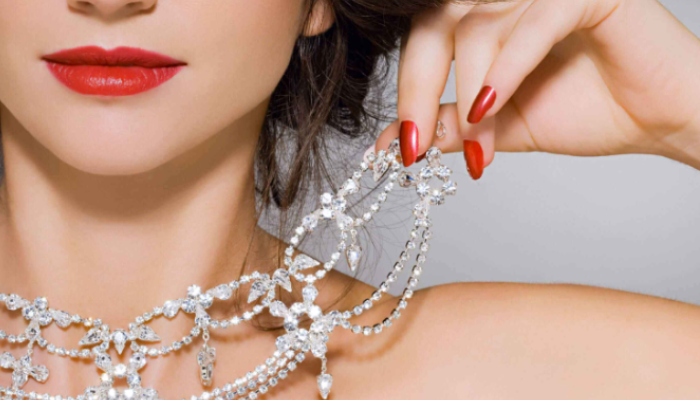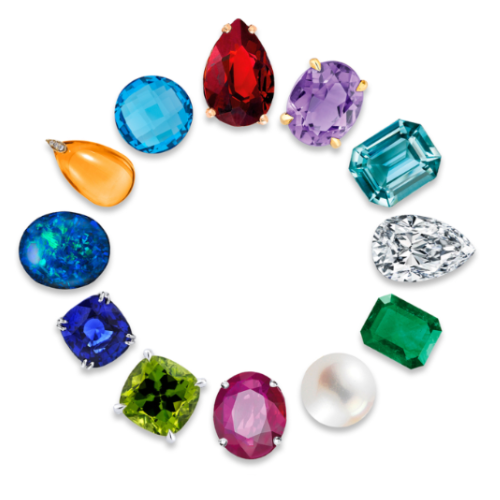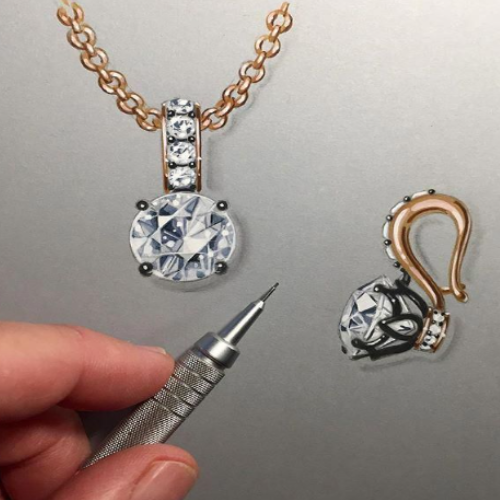
Bespoke jewellery is a deeply personal and unique expression of style, taste, and sometimes even love. When commissioning a custom-made piece, it’s essential to understand the various factors that affect the cost of bespoke jewellery. From material selection to design complexity, every decision you make will impact both the final price and the value of the piece. This blog post dives into the intricate factors that influence the cost of bespoke jewellery, ensuring you’re well-informed before embarking on this exciting journey.
Understanding Custom Jewellery Pricing: More Than Meets the Eye
When you decide to create bespoke jewellery, you’re not just paying for materials – you’re investing in artistry, expertise, and a piece of wearable history. The journey from concept to creation involves numerous factors that influence the final cost, making each piece as unique in its pricing as it is in its design. As one veteran jeweller puts it:
“Every custom piece tells a story, and the price reflects not just what you see, but the journey it took to get there. When you make custom jewellery, you’re not buying an object—you’re investing in a legacy.”
The Basics: Primary Cost Factors in Custom Jewellery Creation
1. Metal Choice and Market Prices
The foundation of any piece of jewellery is its metal, and this choice significantly impacts the cost to make custom jewellery.
Market fluctuations can cause significant price variations. For instance, The Jewellery Mechanic notes that gold prices have seen swings of up to 15% in a single quarter, directly affecting what customers pay to create bespoke jewellery.
Expert Insight: “We often recommend 9ct gold for clients who want the perfect balance of durability and value. It’s strong enough for everyday wear while keeping costs manageable.” – The Jewellery Mechanic

2. Gemstone Selection: The Sparkle Factor
When selecting gems for your bespoke piece, several factors come into play:
The 4 Cs in Detail:
- Cut: Affects brilliance and can account for up to 40% of the price
- Colour: Rarity of the hue, with some fancy colours increasing price exponentially
- Clarity: Presence of inclusions, with flawless stones commanding premium prices
- Carat weight: Size and mass, though prices increase non-linearly

3. Design Complexity and Labor
The time and skill required to create bespoke jewellery can vary dramatically. Here’s a breakdown of common techniques and their impact on pricing:
| Technique | Time Required | Skill Level | Price Impact |
| Simple band | 3-4 hours | Beginner | € |
| Pavé setting | 8-12 hours | Intermediate | €€ |
| Filigree work | 15-20 hours | Advanced | €€€ |
| Custom figurative piece | 40+ hours | Master | €€€€ |
Custom Design Process
A bespoke design typically begins with a consultation, where ideas are exchanged. After finalising a concept, a jeweller may create a sketch of the piece. This helps ensure that all the details are correct before production begins.
More revisions and changes add to the cost. For instance, a basic ring design might cost less, but if you request engraving, filigree, or pave settings (multiple tiny stones), the price will rise due to the additional labour.
Handmade vs Machine-Made
Bespoke jewellery is often handcrafted by skilled artisans, which requires more time and effort compared to machine-made jewellery. A handmade piece adds to the overall quality and aesthetic but also significantly increases the cost.
- Handmade jewellery can take weeks or even months to complete.
- Machine-made jewellery, though cheaper, lacks the personal touch and craftsmanship of a hand-finished piece.

Hidden Factors That Influence Bespoke Jewellery Pricing
1. Jeweller’s Expertise and Reputation
The artisan’s experience significantly impacts what you’ll pay to create bespoke jewellery. Consider these factors:
- Years of experience:
- Apprentice (0-5 years): Base rate
- Journeyman (5-10 years): 25-50% premium
- Master (10+ years): 50-100% premium
- Renowned artist: 100%+ premium
- Location costs:
- Workshop rent in prime urban location
- Utilities and insurance
- Staff costs
- Brand recognition:
- Local jeweller: Standard pricing
- National brand: 20-50% premium
- International luxury house: 100-200% premium
2. Manufacturing Process
Different creation methods affect pricing and each has its place in modern jewellery making:
Traditional Methods:
- Hand-fabrication:
- Most expensive
- Best for unique, organic designs
- Lost-wax casting:
- Mid-range
- Excellent for complex, repeatable designs
Modern Techniques:
- 3D printing and casting:
- Ideal for precision and complex geometric designs
- Laser welding:
- Perfect for delicate repairs and fine detail work
The Jewellery Mechanic Insight: “We often combine traditional and modern techniques to achieve the best results. For instance, we might use 3D printing for precise symmetry in a design, then add hand-finished details for a personal touch.”
3. Customization Level
The degree of personalization directly impacts pricing:
| Customization Level | Description | Price Impact | Timeline |
| Modified existing | Tweaking standard designs | 10-25% over retail | 1-2 weeks |
| Partial custom | Some unique elements | 25-75% over retail | 2-4 weeks |
| Fully bespoke | Completely unique | 75-200% over retail | 4-8 weeks |
Additional Considerations Affecting Custom Jewellery Costs
Timeline and Rush Fees
Standard creation times for bespoke pieces typically range from 3-8 weeks. Here’s how timing affects cost:
| Timeframe | Rush Fee | Notes |
| Standard (4-8 weeks) | None | Best value |
| Expedited (2-4 weeks) | 25% | Subject to availability |
| Rush (1-2 weeks) | 50% | Limited options |
| Emergency (< 1 week) | 75% | When possible |
Insurance and Security
Security measures impact pricing but are essential:
- During creation:
- Secure storage
- Workshop insurance
- Transportation:
- Insured shipping
- Courier (high-value items)
Smart Strategies to Save on Bespoke Jewellery
When looking to create bespoke jewellery on a budget, consider these expert tips from The Jewellery Mechanic:
Alternative materials:
Potential Savings:
– 9ct vs. 18ct gold
– Palladium vs. platinum
– Lab-grown vs. natural diamonds
Design optimization:
– Use negative space effectively
– Opt for lighter weight constructions
– Choose visual impact over material quantity
Timing your purchase:
– Metal price trends
– Seasonal discounts
– Limited-time promotions
Case Study: Smart Savings A client wanted a custom engagement ring but had a limited budget of £3,000. By working with The Jewellery Mechanic, they:
- Chose 9ct yellow gold instead of 18ct
- Selected a lab-grown diamond instead of a mined diamond
- Used a sleek, modern design that minimised metal weight
Final result: A stunning, unique ring for £2,800 that looked like it cost £5,000+

Making the Most of Your Investment
Long-term Value Considerations
When you make custom jewellery, think about:
- Investment potential:
- Gold typically appreciates 5-10% annually
- Rare gemstones can appreciate 15%+ annually
- Collector pieces can double in value within 5-10 years
- Maintenance costs:
| Service | Frequency | Typical Cost |
| Professional cleaning | 6 months | £25-£50 |
| Prong retipping | 2-5 years | £40-£60 per prong |
| Replating (white gold) | 1-2 years | £50-£100 |
| Insurance | Annual | 1-2% of value |
The Role of Technology in Modern Bespoke Jewellery Creation
As The Jewellery Mechanic embraces the digital age, technology plays an increasingly important role in how we create bespoke jewellery. This intersection of traditional craftsmanship and modern innovation affects both the creative process and pricing.
CAD Design and Its Impact on Costs
Computer-Aided Design (CAD) has revolutionised custom jewellery creation:
| Aspect | Traditional Method | CAD Method | Cost Implication |
| Design Time | 5-10 hours sketching | 2-4 hours digital design | £150-£300 savings |
| Revisions | New sketch needed | Quick digital adjustments | £100-£200 savings per revision |
| Precision | Hand-eye dependent | Computer-precise | Reduced material waste |
| Visualisation | 2D sketches only | 3D renderings | Better client satisfaction |
Client Experience: “Being able to see a 3D render of my design before production gave me confidence in my investment. It was worth the extra £200 for the visualisation.” – Maria G., Recent Client
3D Printing in Jewellery Production
The advent of 3D printing has introduced new possibilities and cost considerations:
Prototyping costs:
- Traditional wax carving: £300-£500
- 3D printed prototype: £100-£200
Time savings:
- Traditional prototyping: 3-5 days
- 3D printed prototype: 24-48 hours
- Cost saving on labour: £200-£400
Complex design execution:
- Designs previously impossible or extremely expensive become feasible
- Intricate lattice work cost reduced by 40-60%
Special Techniques and Their Cost Implications
Traditional Handcrafting Techniques
Certain specialised techniques can significantly impact the cost to make custom jewellery:
- Hand Engraving:
| Style | Time Required | Typical Cost |
| Simple text | 1-2 hours | £25-£100 |
| Scrollwork | 3-5 hours | £150+ |
| Pictorial | 8-15 hours | £200+ |
Modern Specialty Techniques
- Laser Welding:
- Equipment costs: £20,000-£50,000 (reflected in pricing)
- Enables repairs previously impossible
- Precision work: £100-£200 per hour
- Electroforming:
- Allows for unique organic shapes
- Setup costs: £150-£300
- Process time: 24-48 hours (£200-£400)
The Psychology of Pricing in Bespoke Jewellery
Perceived Value vs. Cost
Understanding the psychological factors that influence how clients perceive value:
- Brand Premium:
- Local artisan: Base price
- National brand: 20-50% premium
- Luxury house: 100-200% premium
2. Exclusivity Factor:
- Limited edition pieces: 25-75% premium
- One-of-a-kind designs: 50-100% premium
- Celebrity jeweller association: 100%+ premium
3. Story and Provenance:
- Historical significance: Can double the price
- Unique material source: 20-30% premium
- Personal meaning: Priceless (but affects budget)
Future Trends Affecting Bespoke Jewellery Costs
Market Predictions
Expert insights on future pricing trends:
- Precious Metals:
- Gold expected to rise 5-10% annually
- Platinum market volatility continuing
- New alloys entering the market
- Gemstones:
- Lab-grown diamonds decreasing in price by 10-15% annually
- Coloured gemstones appreciating 5-8% annually
- New treatments affecting pricing
Practical Tips for Budgeting Your Bespoke Piece
Timeline Planning:
- Start 6 months ahead for best prices
- Avoid holiday season rush fees
- Consider metal price fluctuations
Material Selection Strategy:
Best value options:
- 9ct gold for daily wear
- Platinum for white metal lovers
- Lab-grown diamonds for maximum impact
Design Optimization:
- Focus on key visual elements
- Use negative space effectively
- Consider two-tone metals for impact
Investment Pieces:
- Classic designs for longevity
- Quality over size for diamonds
- Prioritise craftsmanship
Conclusion: The True Value of Bespoke Jewellery
Investing in bespoke jewellery is more than just about the materials—it’s about creating a unique, one-of-a-kind piece that holds sentimental and financial value. While bespoke jewellery can be expensive, understanding the various factors that influence the cost will help you make informed decisions and get the most value out of your investment.
Whether you’re working with The Jewellery Mechanic or another trusted jeweller, bespoke jewellery offers a blend of craftsmanship, personalization, and exclusivity that makes it worth every penny.
Ready to start your bespoke jewellery journey? The Jewellery Mechanic is here to guide you through creating a piece that’s uniquely yours, at a price point that makes sense for you.
FAQs
- How much does bespoke jewellery typically cost?
- It can range from hundreds of pounds to tens of thousands, depending on materials and design complexity.
- Why does bespoke jewellery cost more than ready-made jewellery?
- You’re paying for personalization, craftsmanship, and high-quality materials.
- Can I get bespoke jewellery made on a budget?
- Yes, by opting for simpler designs and alternative materials like lab-grown gemstones.
- What’s the average timeline for bespoke jewellery creation?
- Between 4 and 12 weeks, depending on the complexity and jeweller’s schedule.
- Do gemstones or diamonds impact the price more in bespoke jewellery?
- Gemstones, particularly diamonds, significantly influence the price, especially when considering size, quality, and origin.
